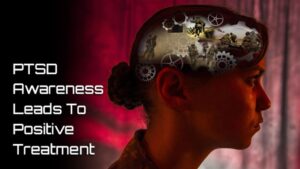

Mental illnesses or disorders are medical conditions that disturb or unsettle a person’s thinking, sensitivity, attitude, ability to communicate to others and daily functioning. Just as diabetes is a disorder of the pancreas, mental illnesses are remedial conditions that often result in a declining capacity for handling and surviving with the normal demands of life.
SERIOUS MENTAL ILLNESS INCLUDES:
- Major depression/ Clinical Depression:
The significance or severity of depression ranges from mild and temporary phases of sadness or unhappiness to severe and insistent depression. Clinical depression is the more-severe form of depression, also known as major depression or major miserable disorder. It is not the same kind of depression as caused by any loss in life, such as the death of a loved one, or a medical condition, such as diabetes or a thyroid disorder.

For the diagnosis of major/ clinical depression, many doctors or psychiatrists uses the symptom criteria for major depressive disorder in the Diagnostic and Statistical Manual of Mental Disorders (DSM-5), published by the American Psychiatric Association.
Signs and symptoms of clinical or major depression:
- Feelings of sadness, blankness, desperateness or tearfulness.
- Getting angry, irritated or frustrated over small small matters and that too very quickly.
- Losing interest in most of the normal activities of life, such as hobbies, sports or sex.
- Sleep disorders like getting insomnia that is restlessness/ wakefulness/ sleeplessness or sleeping too much irrespective of the time.
- Too much of tiredness or lack of energy due to which even small tasks ask for extra efforts.
- Either reduced hungriness and weight loss or vice-versa.
- Nervousness, tension or impatience.
- Getting very slow in speaking, thinking or any other body movements.
- Feelings of unimportance or guilt which may be due to any past failures or self-blame.
- Facing too much troubles in making any decisions, thinking or concentrating and remembering things.
- Regular or repeated thoughts of death, suicidal thoughts, suicide attempts or suicide.
- Mysterious and unsolved physical problems such as back pain or headaches.
Such symptoms get more severe enough and starts creating visible and evident problems in dealing with the relationships with others or in day-to-day activities, such as work, school or social activities.
Clinical depression can affect people of any age, including children. However, clinical depression symptoms, even if severe, usually improve with psychological counselling, antidepressant medications or a combination of the two.
2. Schizophrenia

Schizophrenia is a severe mental disorder in which a person interprets reality abnormally.
They are more into Hallucinations and Delusions as per which, they talk and behave in a very abnormal way and seems as if they are talking or arguing with a person who is not there in reality. At times or depending on the severity, Schizophrenic people result in combination of hallucinations, delusions and disordered thinking and speech that impairs their daily functional life and appears to others that they are disabled to do anything in a right or correct manner as per the customs and society. Schizophrenia is a chronic condition, requiring lifetime treatment. The main symptoms of Schizophrenia are Hallucinations, Delusions, Disordered thinking, behaviour and speech. Among the negative symptoms, we can narrate the symptom as reduced or lack of ability to function normally. For example, the person may neglect personal hygiene or appear to lack emotion (doesn’t make eye contact, doesn’t change facial expressions or speaks in a monotone). Also, the person may have lose interest in everyday activities, socially withdraw or lack the ability to experience pleasure.

3. Bipolar Disorder

Bipolar Disorder also known as Manic Depression is a primary mood disorder. It is primarily concerned with mood swings in a person. Bipolar disorder is a disease or illness which has extremes of mood changes, be it highly happy energetic or highly sad depression state. This illness causes so much frequent changes in moods that then it’s very difficult for such persons to be accepted in the world in the working field or in relations with the family or friends. In Bipolar Disorder there are revolving episodes of depression and mania which is considered to be a lifelong illness or disorder. The severity of mood changes diagnoses the type of disorder and they present with the severity.
4. Obsessive Compulsive Disorder (OCD)

Obsessive-compulsive disorder (OCD) is a disorder in which people have repeated unwanted thoughts, ideas or sensations (obsessions) that make them feel driven to do something repetitively (compulsions). The repetitive behaviours, such as hand washing, checking on things or cleaning, can significantly interfere with a person’s daily activities and social interactions.
Many people without OCD have stressful thoughts or dull behaviours. However, these thoughts and behaviours do not typically disturb daily life. For people with OCD, thoughts are determined, and behaviours are rigid. Not performing the behaviours commonly causes great pain. Many people with OCD know or suspect their fascinations are not accurate; others may think they could be true (known as limited insight). Even if they know their obsessions are not accurate, people with OCD have difficulty undoing from the obsessive thoughts or stopping the habitual actions.
A diagnosis of OCD requires the presence of fascinations and/or compulsions that are time-consuming (more than one hour a day), cause substantial pain, and damage work or social functioning. OCD often begins in childhood, adolescence, or early adulthood; the average age symptoms appear is 19 years old.
5. Panic Disorder

Panic disorder occurs when recurring, unexpected panic attacks are experienced by a person. There may be panic attack when sudden, overwhelming terror are felt that has no obvious cause. There may be physical symptoms too, such as a racing heart, breathing difficulties, and sweating. Symptoms of panic disorder often begin to appear in young adults of age between 20 and 24 years old. A person may have a panic disorder if he/she had four or more panic attacks, or live in fear of having another panic attack after experiencing one. Even though the symptoms of panic disorder can be irresistible and alarming, they can be managed and improved with treatment. Seeking treatment is the most important part of reducing symptoms and improving the quality of life.
6. Post-Traumatic Stress Disorder (PTSD)


Posttraumatic stress disorder (PTSD) is a psychiatric disorder that may occur in people who have experienced or seen a traumatic event such as a natural disaster, a serious accident, a terrorist act, war/battle, or rape or who have been endangered with death, sexual violence or serious injury. People with PTSD have strong, troubling thoughts and feelings related to their experience that last long after the shocking event has ended. They may recreate the event through memories or hallucinations; they may feel sadness, fear or anger; and they may feel apart or separated from other people. People with PTSD may avoid situations or people that remind them of the traumatic event, and they may have strong negative reactions to something as ordinary as a loud noise or an accidental touch.
A diagnosis of PTSD requires introduction to an upsetting traumatic event. However, the experience could be unintended rather than first hand. For example, PTSD could occur in an individual learning about the forceful death of a close family or friend. It can also occur as a result of repeated exposure to horrible details of trauma.
7. Borderline Personality Disorder

Borderline personality disorder (BPD) is a mental illness. It develops during the youth or early adulthood. It’s marked by a pattern of expressive uncertainty, thoughtless behavior, partial self-image, and unbalanced relationships. Multiple factors may contribute to the disorder, including inheritances, environmental factors, and serotonin deviations. The treatment of BPD may involve psychotherapy, medication, or hospitalization as a part of its treatment recommended by a mental health professional.
